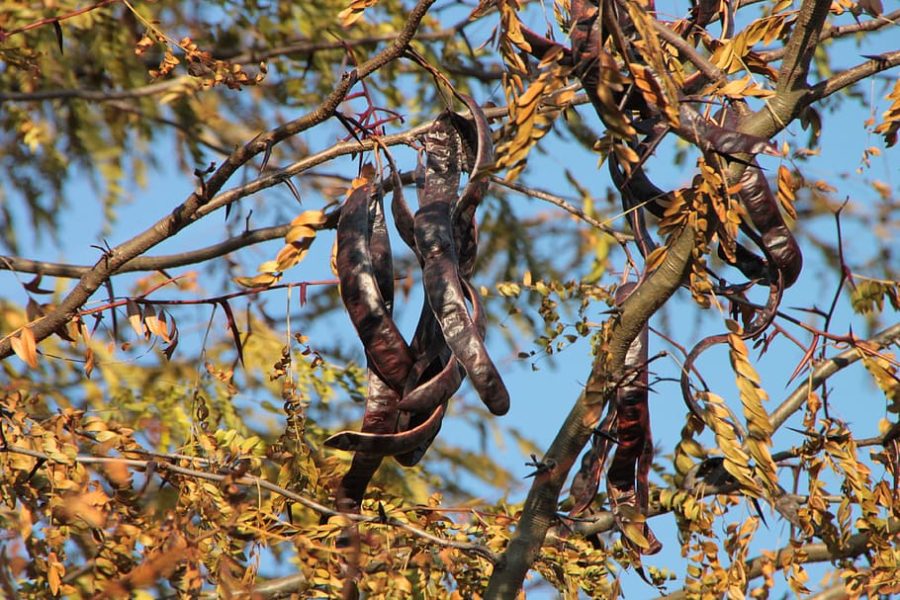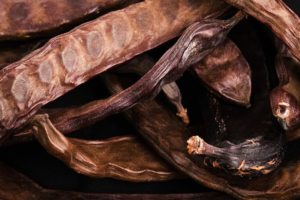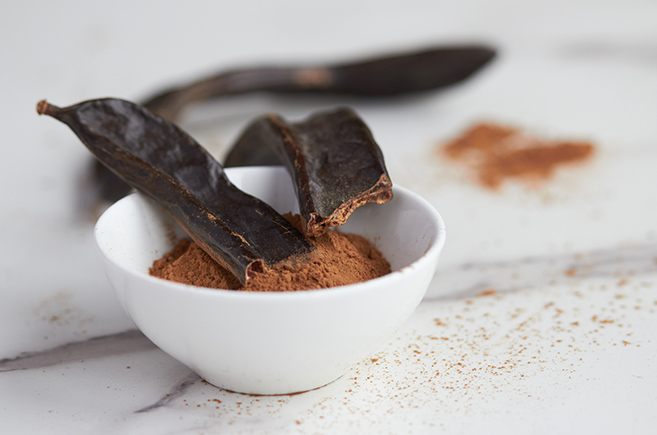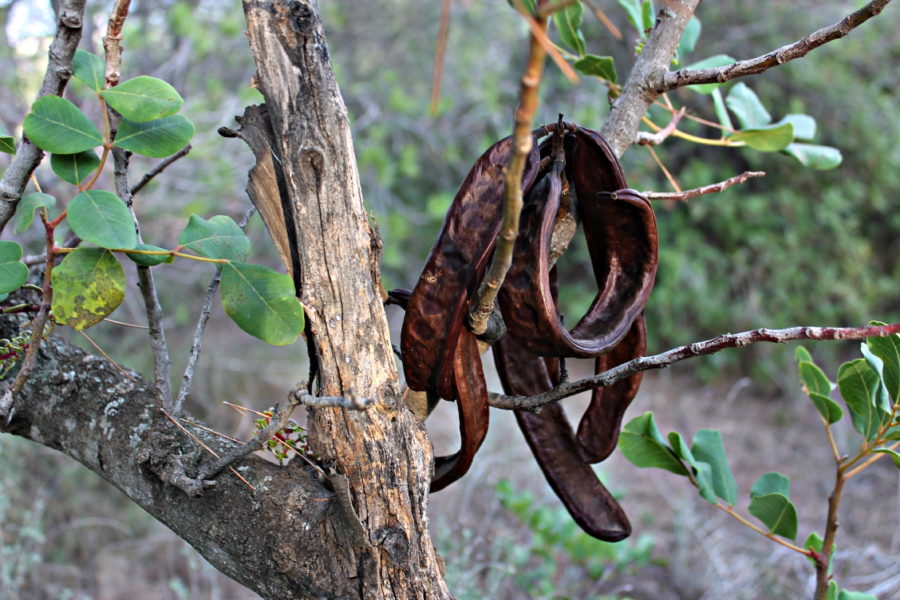The carob tree (Ceratonia siliqua L.) is a big tree original from the Mediterranean region. Its exact origin is not clear because, as it has been cultivated since Ancient times due to its fruit, the carob bean, and it was already consumed by the Phoenicians, Greeks, Romans and Arabs.
From an etymological perspective, the word carob, comes from the Arabic ẖarrūbah o ẖarnūbah, and this from the Persian har lup, “jaw of donkey”. Its popular name in many languages is “bread of St. John”, as John the Baptist only ate fruit from this tree.

The carob is an evergreen tree, tall and sturdy, with small red flowers with no petals. The carob is a hanging bean of 8 to 20 cm, of color brown, and with seeds inside. The flowers grow during the summer and the beginning of fall, when the fruits ripen. When the tree is blooming, it produces a characteristic sweet smell.
It is a very beneficial species for the natural balance of ecosystems, as well as from an environmental perspective, as it gives shelter to different birds and mammals. In addition, it is very resistant to pests and draughts, and it doesn’t need much attention. It can grow in places where other trees wouldn’t be able to survive, such as cliffs, as well as rocky, alkaline and low-quality soils.
The carob as a food resource
For thousands of years, the carob has been used as food for animals, although it was also used for human consumption. Given that it was used as food for livestock and, its flour was used as food for the impoverished population in times of famine, it was not very popular. Its fruits have been underestimated and considered “low-quality” food in Europe, and it has been mostly used for animal nutrition.
It is a very beneficial species for the natural balance of ecosystems, as well as from an environmental perspective, as it gives shelter to different birds and mammals.
 In spite of this, it had such an important impact on the Mediterranean culture that its seeds were the origin of the carat (from the Arabic qīrāṭ, and the Greek κεράτιον kerátion, “four grains weight”). For this reason, it was used to weight gems and jewels, given that the weight and size of the seeds is always the same.
In spite of this, it had such an important impact on the Mediterranean culture that its seeds were the origin of the carat (from the Arabic qīrāṭ, and the Greek κεράτιον kerátion, “four grains weight”). For this reason, it was used to weight gems and jewels, given that the weight and size of the seeds is always the same.
Today, the carob bean has become a regular fruit in the Maghreb countries. Moroccan Amazighs drink it as an infusion to treat digestive diseases. In fact, Morocco is the second global producer of carob and sells this fruit’s honey. In some countries, its flour is used for children formula, due to its low degree of allergenicity and its nutritional value.
Moroccan Amazighs drink it as an infusion to treat digestive diseases. In fact, Morocco is the second global producer of carob and sells this fruit’s honey. In some countries, its flour is used for children formula
It is rich in trace elements, such as calcium, iron, magnesium, phosphorus, and silica. On the other hand, its seeds are rich in polysaccharides, including galactomannan. These complex sugars can replace starch.
Carob’s current use
The carob has been used for many years in different industrial and food sectors, and its market presence is consolidating and its use is increasingly extended.

The carob belongs to the family of legumes. Its pulp is low in calories and rich in fibers and sugars, so it doesn’t need industrial sweeteners. This makes it a healthy choice for people with diabetes or overweight.
Carob is also used to produce a chocolate substitute used in dietary foods. Carobs are very sweet and can also be used in bakery, to cook cakes, pastry or ice-creams, combined with nuts.
We could say tha,t although the carob has been with us for thousands of years, its use hasn’t gained the reputation it deserves.
Eva Iturbe – FUNCI
References:
http://bioeduca.malaga.eu/es/catalogo-de-especies/detalle-de-la-especie/Algarrobo/
https://www.arbolesibericos.es/especie/ceratoniasiliqua
https://paginasarabes.com/2019/08/12/el-algarrobo-en-la-cultura-arabe/
https://paginasarabes.com/2015/11/26/la-algarrobauna-dulce-opcion/
https://www.caroube.net/seccion/2-algarrobo-ceratonia-siliqua
This post is available in: English Español

